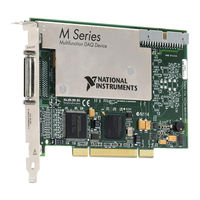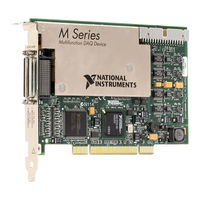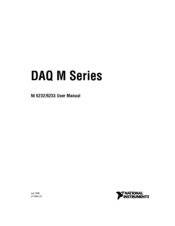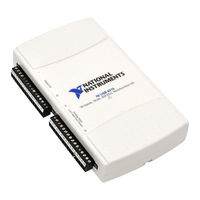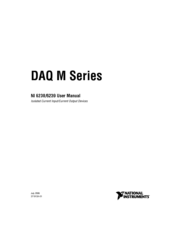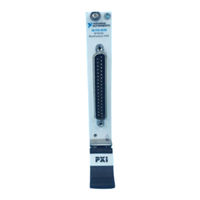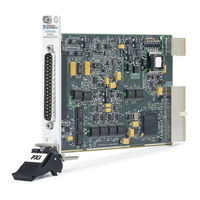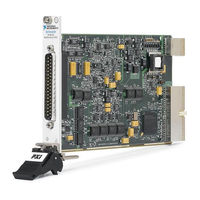National Instruments DAQ M Series Manuals
Manuals and User Guides for National Instruments DAQ M Series. We have 11 National Instruments DAQ M Series manuals available for free PDF download: User Manual
National Instruments DAQ M Series User Manual (298 pages)
Multifunction I/O Modules and Devices
Brand: National Instruments
|
Category: I/O Systems
|
Size: 5 MB
Table of Contents
Advertisement
National Instruments DAQ M Series User Manual (298 pages)
Multifunction I/O Modules and Devices
Brand: National Instruments
|
Category: Data Loggers
|
Size: 5 MB
Table of Contents
National Instruments DAQ M Series User Manual (298 pages)
Brand: National Instruments
|
Category: I/O Systems
|
Size: 5 MB
Table of Contents
Advertisement
National Instruments DAQ M Series User Manual (297 pages)
Multifunction I/O Modules and Devices
Brand: National Instruments
|
Category: I/O Systems
|
Size: 13 MB
Table of Contents
National Instruments DAQ M Series User Manual (180 pages)
DAQ M Series NI 6232/6233 User Manual
Brand: National Instruments
|
Category: Network Card
|
Size: 2 MB
Table of Contents
National Instruments DAQ M Series User Manual (204 pages)
Bus-Powered USB Devices
Brand: National Instruments
|
Category: Measuring Instruments
|
Size: 6 MB
Table of Contents
National Instruments DAQ M Series User Manual (172 pages)
DAQ M Series Isolated Current Input/C urrent Output Devices
Brand: National Instruments
|
Category: I/O Systems
|
Size: 2 MB
Table of Contents
National Instruments DAQ M Series User Manual (174 pages)
Isolated Current Input/Current Output Devices
Brand: National Instruments
|
Category: I/O Systems
|
Size: 4 MB
Table of Contents
National Instruments DAQ M Series User Manual (172 pages)
Brand: National Instruments
|
Category: Network Card
|
Size: 2 MB
Table of Contents
National Instruments DAQ M Series User Manual (171 pages)
Brand: National Instruments
|
Category: Network Card
|
Size: 2 MB
Table of Contents
National Instruments DAQ M Series User Manual (21 pages)
Brand: National Instruments
|
Category: I/O Systems
|
Size: 0 MB
Table of Contents
Advertisement
Related Products
- National Instruments DIO 6533
- National Instruments DAQCard E Series
- National Instruments DAQ Series
- National Instruments DAQ Analog Output Series
- National Instruments DAQPad-6508
- National Instruments DAQPad-6507
- National Instruments DAQ
- National Instruments DAQCard-6533
- National Instruments DAQPad-1200
- National Instruments 24-Bit Half/Full-Bridge Analog Input Module NI 9237

